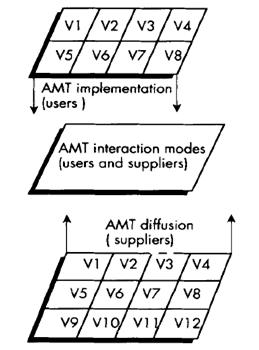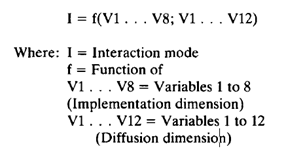Customer-supplier Chains In A Technological Context
Type IV Business systems - multi-supply source
This type was found to be applicable to complex AMT projects such as Flexible Manufacturing Systems (FMS). A major supplier is put in charge of the project management activities and manages dealings with second tier suppliers on behalf of the customer. The main suppliers in this category tend to have their own manufacturing/ R&D base in the UK. In addition to manufacturing their own products, they may manufacture other equipment under license. There is a high requirement for project management capability in this case and the communication processes tend to be complex. The customers concerned are involved throughout the various stages of the projects.
Type V Business systems - direct single source supply
Similarly to the previous type, this pattern is applicable to complex projects such as FMS. The main feature here is the huge supplier capability in manufacturing a wide range of products to provide total turnkey projects using their own equipment, with limited utilisation of second tier suppliers.
Type VI Business systems - indirect single source supply
Similarly to the previous two patterns, this type deals with the implementation of complex AMT projects such as Automatic Guided Vehicle Systems (AGVs). Advanced Manufacturing Technology innovation is revolutionary and not based on previous technologies. The communication processes are highly complex and tend to be characterized by suppliers and users learning together.
Models helping in establishing bonds between the customer and the supplier:
The model suggests that there are three parts to the establishment of customer-supplier chains:
(i) AMT implementation dimension: This is based on criteria which were found to affect the user adoption process;
(ii) AMT diffusion dimension: This is based on criteria which were found to affect the supplier diffusion process;
(iii) The interaction dimension: This is based on the combination of variables in the adoption process with others from the diffusion process.
The variables which are the building blocks have all been found to have some prominence in determining various climates of customer-supplier interactions.
The effectiveness of AMT interaction processes: 
The combination of the various interactions between variables pertaining to the diffusion and adoption processes determines the type of interaction process,
Various interaction modes can be represented as a function of adoption and diffusion variables:
